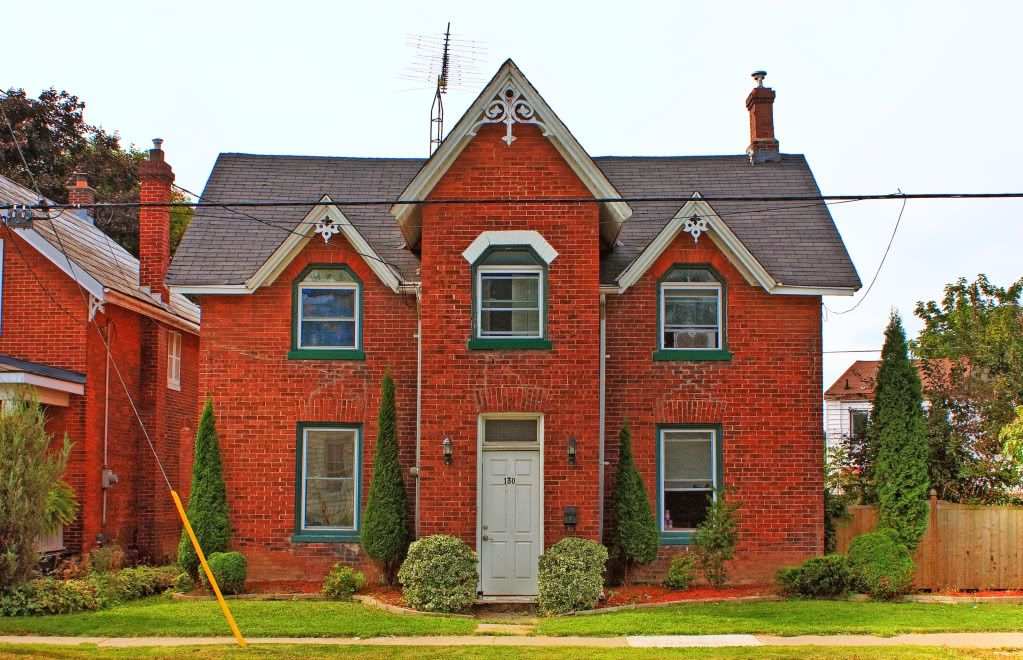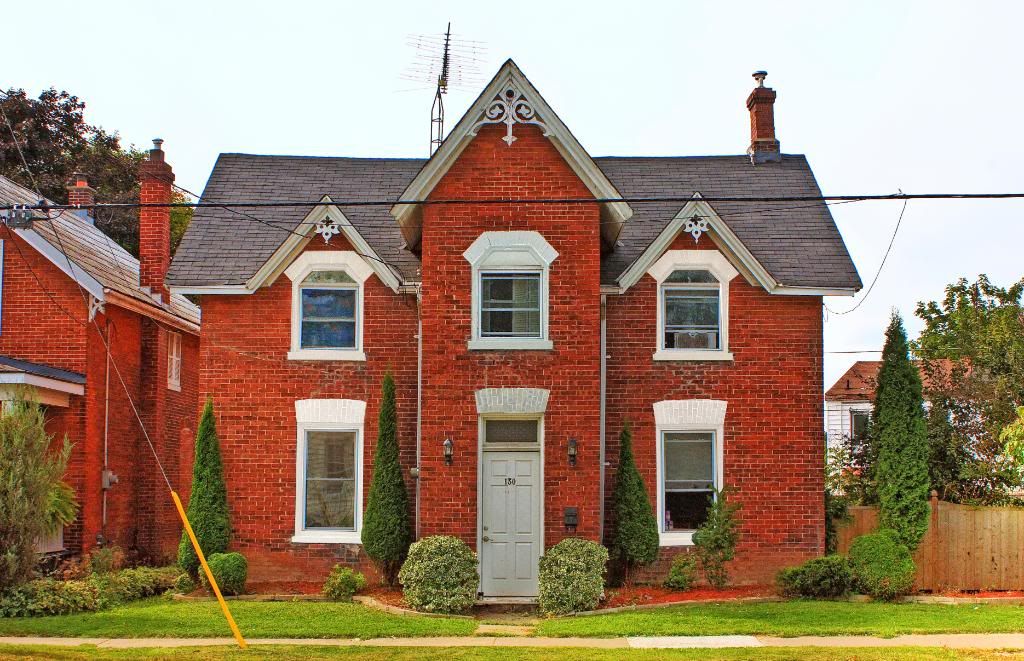You should buy a "masonary paint".
The reason why is that nothing can damage masonary more quickly than it getting saturated with water, and then freezing. The expansion of the water inside the masonary creates tremendous pressures that result in the surface of the masonary breaking off in chips; a process called "spalling".
Masonary paints are latex paints where the binder resin in the paint has been chosen based on it's ability to allow individual H2O to pass through the paint, but not liquid water.
The way this is accomplished is easily understood if one considers a plastic polymer molecule to be a long wire that's been scrunched up into a ball. Despite it being scrunched up, there are still gaps between the wires in this ball that something like sand, say, could pass throught.
In masonary paints, the gaps within the binder resin (the scrunched up wire) are larger than the diameter of a single H2O molecule, but smaller than the average distance between H2O in liquid water.
As a result, H20 molecules can pass through the paint film relatively easily, but not liquid water. This allows the paint film to work very much like a check valve; allowing moisture inside the masonary to evaporate through the paint film, but preventing the masonary film from absorbing water when it rains. Thus the masonary stays drier than it otherwise would, minimizing the possibility of freezing damage.
Unfortunately, my understanding is that you're painting over paint. If the existing paint is not a masonary paint, then painting over it with a masonary paint won't give you that "check valve" benefit that you buy the masonary paint for.
To get that benefit, you'd have to remove the existing paint from any masonary you want to paint over with masonary paint. And, every time you repaint that masonary, it'll have to be with another masonary paint in order to retain that benefit.
A masonary paint is very similar in every respect to any other exterior latex paints. The quality that differentiates it from other latex paints is the size of the spaces between the scrunched up wire in the binder resin, which is something you can discern. So, you can use a masonary paint over painted metal and wood exactly the same way as you would with any exterior latex paint.
Using a masonary paint over wood has the same benefit in that it keeps the wood dryer, but wet wood doesn't crack when it freezes like masonary does.
I would scrape the old paint off the masonary you want to repaint, and paint it with a masonary paint. Otherwise, you can paint it with any exterior latex paint as the previous owners probably didn't know enough about paints to have known to use a masonary paint.
Also, don't confuse a masonary paint with a concrete primer. Concrete is highly alkaline during the first few years of it's life, and that high alkalinity causes chemical degradation of paints that aren't highly alkali resistant. Concrete primers are highly resistant to alkalinity. Masonary paints aren't necessarily so. Masonary paints claim to fame lies in their ability to allow H2O molecules to pass through the paint film.
I'm not endorsing anyone's paint here, but most paint companies have a masonary paint in their line-up. Canadian Tire sells "Armor Coat Masonary Paint".
Canadian Tire isn't reknown for the quality of their paints, but if were my house, I'd paint your brickwork with Canadian Tire's Masonary paint before I painted over that brickwork with anyone else's top-of-the-line exterior latex. That's because the binder in the masonary paint would have been chosen for it's ability to beathe, whereas in a top of the line paint it would be chosen for all around best performance. And when it comes to masonary, keeping it dry is more important than having to repaint very 20 years instead of every 25. Just my opinion.
Hope this helps.









